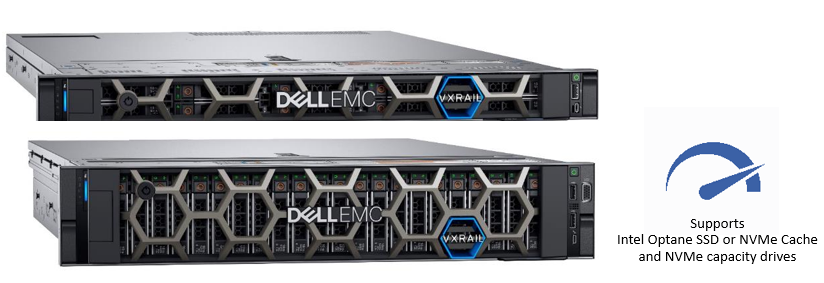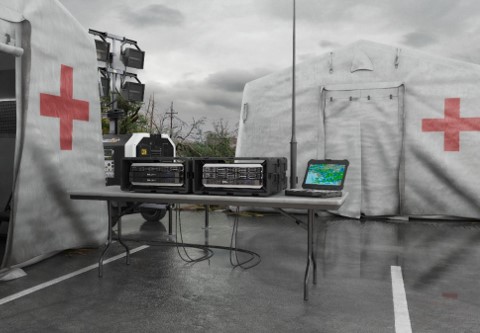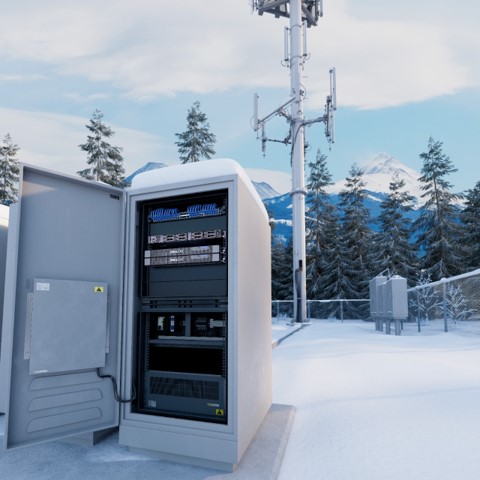

New all-NVMe VxRail platforms deliver highest levels of performance
Mon, 17 Aug 2020 18:31:30 -0000
|Read Time: 0 minutes
Two new all-NVMe VxRail platforms deliver highest levels of performance
December 11, 2019

If you have not been tuned into the VxRail announcements at VMworld Barcelona last month, this is news to you. VxRail is adding more performance punch to the family with two new all-NVMe platforms. The VxRail E Series 560N and P Series 580N, with the 2nd Generation Intel® Xeon® Scalable Processors, offer increased performance while enabling customers to take advantage of decreasing NVMe costs.
Balancing workload and budget requirements, the dual-socket E560N provide a cost-effective, space-efficient 1U platform for read-intensive workloads and other complex workloads. Configured with up to 32TB of NVMe capacity, the E560N is the first all-NVMe 1U VxRail platform. Based on the PowerEdge R640, the E560N can run a mix of workloads including data warehouses, ecommerce, databases, and high-performance computing. With support for Nvidia T4 GPUs, the E560N is also equipped to run a wide range of modern cloud-based applications, including machine learning, deep learning, and virtual desktop workloads.
Built for memory-intensive high-compute workloads, the new P580N is the first quad-socket and also the first all-NVMe 2U VxRail platform. Based on the PowerEdge R840, the P580N can be configured with up to 80TB of NVMe capacity. This platform is ideal for in-memory databases and has been certified by SAP for SAP HANA. The P580N provides 2x the CPU compared to the P570/F and offers 25% more processing potential over virtual storage appliance (VSA) based 4-socket HCI platforms that require a dedicated socket to run (VSA).

The completion of the SAP HANA certification for the P580N which coincides with the P580N’s general availability demonstrates the ongoing commitment to position VxRail as the HCI platform of choice for SAP HANA solutions. The P580N provides even more memory and processing power than the SAP HANA certified P570F platform. An updated Validation Guide for SAP HANA on VxRail will be available in early January on the Dell EMC SAP solutions landing page for VxRail.
For more information about VxRail E560N and P580N, please check out the resources below:
All Things VxRail at dellemc.com
SAP HANA Certification page for VxRail
Dell EMC VxRail SAP Solutions at dellemc.com
Available 12/20/2019 - Dell EMC Validation Guide for SAP HANA with VxRail
By:
Daniel Chiu
linkedin.com/in/daniel-chiu-8422287
Vic Dery
@VxVicTx
Related Blog Posts

Deploying SAP HANA at the Rugged Edge
Mon, 14 Dec 2020 18:38:19 -0000
|Read Time: 0 minutes
SAP HANA is one of those demanding workloads that has been steadfastly contained within the clean walls of the core data center. However, this time last year VxRail began to chip away at these walls and brought you SAP HANA certified configurations based on the VxRail all-flash P570F workhorse and powerful quad socket all-NVMe P580N. This year, we are once again in the giving mood and are bringing SAP HANA to the edge. Let us explain.

Dell Technologies defines the edge as “The edge exists wherever the digital world & physical world intersect. It’s where data is securely collected, generated and processed to create new value.” This is a very broad definition that extends the edge from the data center to oil rigs, to mobile response centers for natural disasters. It is a broad claim not only to provide compute and storage in such harsh locations, but also to provide enough of it that meets the strict and demanding needs of SAP HANA, all while not consuming a lot of physical space. After all -- it is the edge where space is at a premium.
Shrinking the amount of rack space needed was the easier of the two challenges, and our 1U E for Everything (or should that be E for Everywhere?) was a perfect fit. The all-flash E560F and all-NVMe E560N, both of which can be enhanced with Intel Optane Persistent Memory, can be thought of as the shorter sibling of our 2U P570F, packing a powerful punch with equivalent processor and memory configurations.
 While the E Series fits the bill for space constrained environments, it still needs data center like conditions. This is not the case for the durable D560F, the tough little champion that joined the VxRail family in June of this year, and which is now the only SAP HANA certified ruggedized platform in the industry. Weighing in at a lightweight 28 lbs. and a short depth of 20 inches, this little fighter will run all day at 45°C with eight hour sprints of up to 55°C, all while enduring shock, vibration, dust, humidity, and EMI, as this little box is MIL-STD 810G and DNV-GL Maritime certified. In other words, if your holiday plans involve a trip to hot sand beaches, a ship cruise through a hurricane, or an alpine climb, and you’re bringing SAP HANA with you (we promise we won’t ask why), then the durable D560F is for you.
While the E Series fits the bill for space constrained environments, it still needs data center like conditions. This is not the case for the durable D560F, the tough little champion that joined the VxRail family in June of this year, and which is now the only SAP HANA certified ruggedized platform in the industry. Weighing in at a lightweight 28 lbs. and a short depth of 20 inches, this little fighter will run all day at 45°C with eight hour sprints of up to 55°C, all while enduring shock, vibration, dust, humidity, and EMI, as this little box is MIL-STD 810G and DNV-GL Maritime certified. In other words, if your holiday plans involve a trip to hot sand beaches, a ship cruise through a hurricane, or an alpine climb, and you’re bringing SAP HANA with you (we promise we won’t ask why), then the durable D560F is for you.
The best presents sometimes come in small packages. So, we won’t belabor this blog with anything more than to announce that these two little gems, the E560 and the D560, are now SAP HANA certified.
Author: David Glynn, Sr. Principal Engineer, VxRail Tech Marketing
References:
360° View: VxRail D Series: The Toughest VxRail Yet
Video: HCI Computing at the Edge
Solution brief: Taking HCI to the Edge: Rugged Efficiency for Federal Teams
Press release: Dell Technologies Brings IT Infrastructure and Cloud Capabilities to Edge Environments
SAP Certification link: Certified and Supported SAP HANA® Hardware Directory

On the record for Sapphire: World Record SAP HANA Performance with Dell PowerEdge R760 Servers
Wed, 17 May 2023 15:19:25 -0000
|Read Time: 0 minutes

SAP HANA is an in-memory database platform used to manage large amounts of data in real time for purposes such as point-of-sale data, real-time analytics for inventory management, supply-chain optimization, and customer behavior analysis. As the amount of data that must be processed grows, servers can be challenged to deliver information and analysis quickly enough to meet the increasingly demanding business requirements for fast data access. That is why SAP HANA users are always on the lookout for better-performing servers.
SAP publishes the results of standardized benchmark tests to assist customers in comparing the performance of different servers when running SAP HANA. Performance results for the Dell PowerEdge R760 server were recently published, and we are excited to share some highlights about how well this server stacks up against other servers.
Fifteen different data points are available for comparing the PowerEdge R760 server to other servers. The standard benchmarks measure three key performance data points for each of the five different database sizes on which the PowerEdge R760 server was tested.
The following table shows the rank of the PowerEdge R760 server for each of the 15 points of comparison among all the different servers tested using SAP’s benchmark version 3. The source of the data is the publicly available SAP Standard Application Benchmarks directory, accessed on 04-19-2023.

The PowerEdge R760 server outperformed all the other servers in 13 of the 15 benchmark points of comparison, and it ranked second in the remaining two.
The PowerEdge R760 server is a two-socket server built with the latest 4th Gen Intel Xeon Scalable processors. It outperforms all other servers in SAP HANA benchmarking—even 4 and 8-socket servers—in every database size of up to 6.5 billion initial records. It provides the performance and versatility to address your most demanding applications, including SAP HANA, with massive databases and mission-critical requirements for real-time performance.
Look for an in-depth study from Prowess: Remarkable SAP Benchmark Performance Results for Dell PowerEdge R760 Servers (delltechnologies.com) about how the PowerEdge R760 server performed against top competitors on the SAP Standard Application Benchmarks.
Learn more about PowerEdge servers and Dell Technologies solutions for SAP.
About the Author:
Seamus Jones
Director, Server Technical Marketing
Seamus serves Dell as Director of Server Technical Marketing, seasoned with over 20 years of real-world experience in both North America and EMEA. His unique perspective comes from experience consulting customers on data center initiatives and server virtualization strategies.




